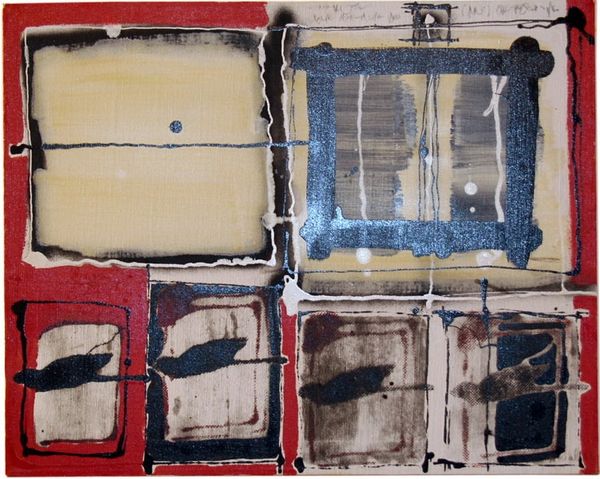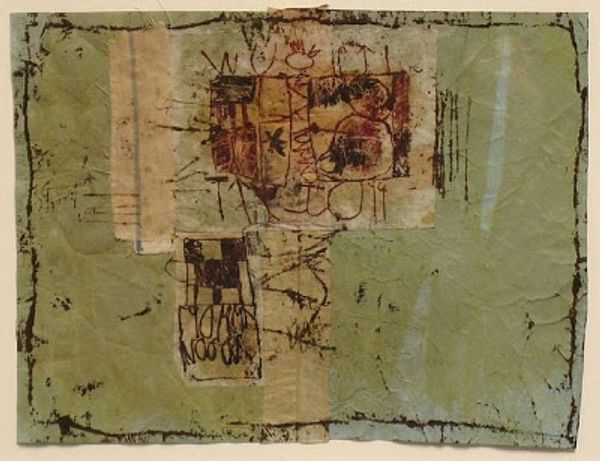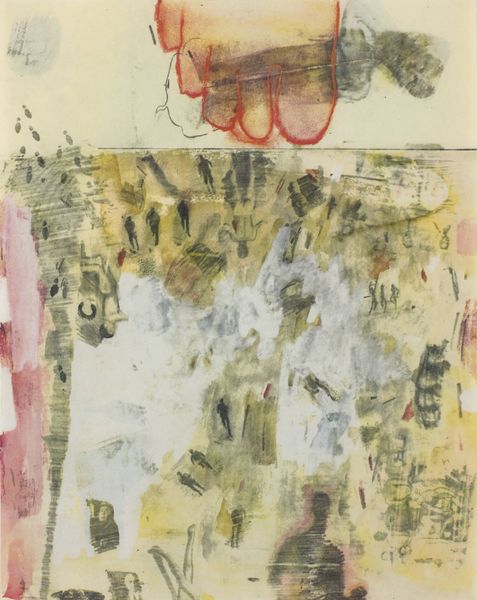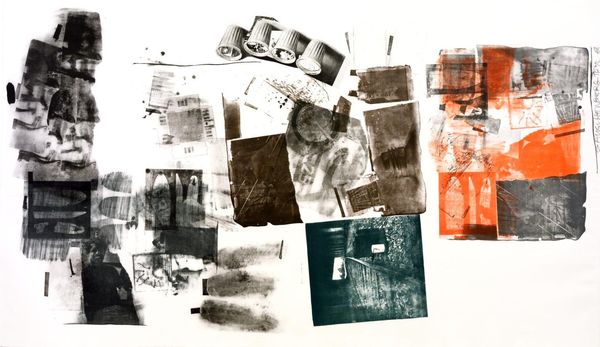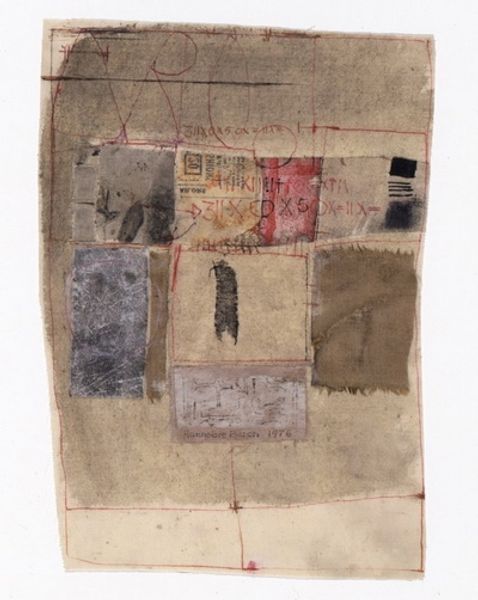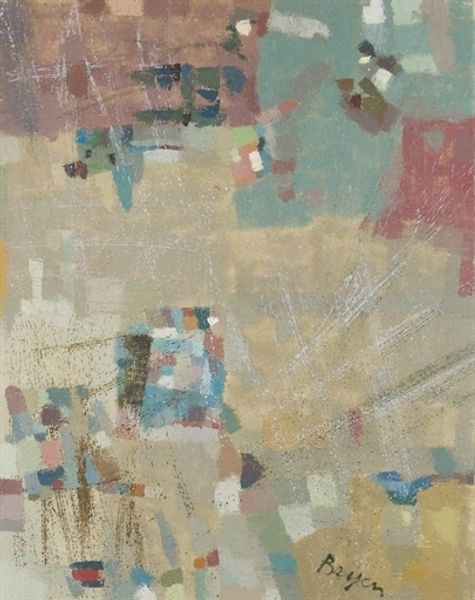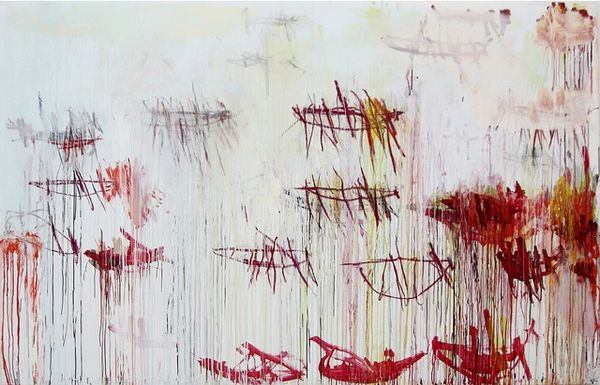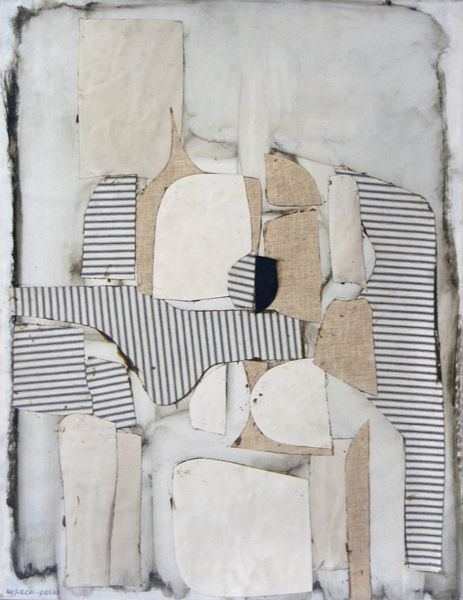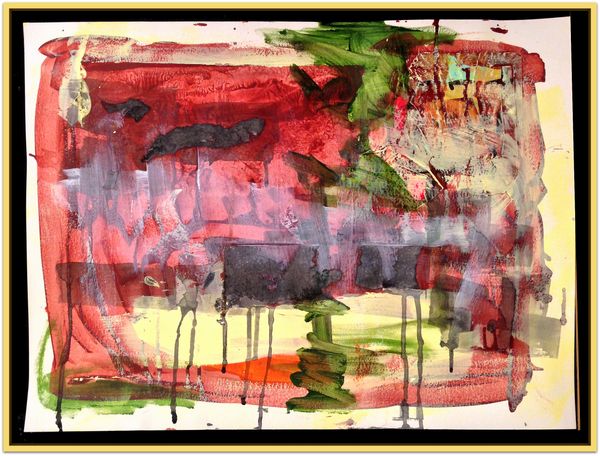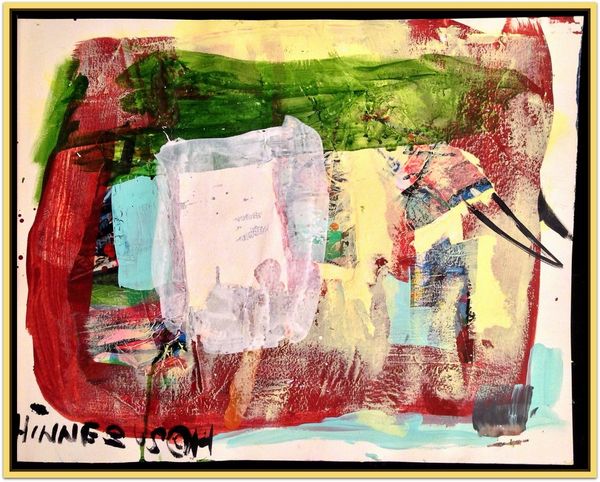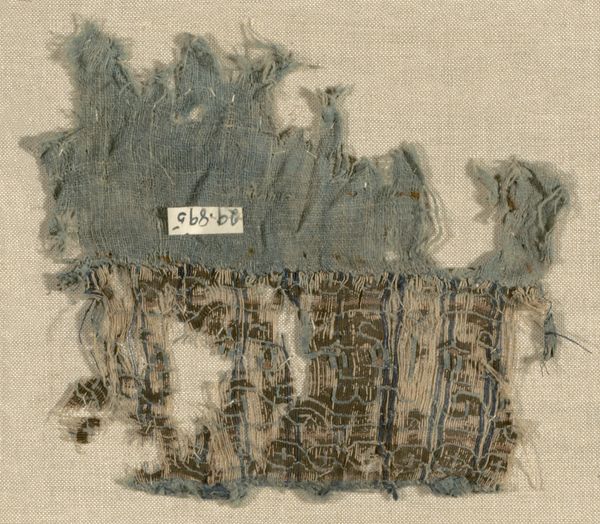
mixed-media, fibre-art, textile, mixed-media
#
mixed-media
#
fibre-art
#
textile
#
mixed-media
Copyright: Geta Bratescu,Fair Use
Curator: Editor: Geta Bratescu’s mixed-media piece, “Remnants #10,” from 1978, is a fascinating combination of textile, fiber art and collage. It's mostly soft neutrals punctuated by a muted yet vibrant rose color. What strikes me is the texture and layering of these materials – it makes me think of history, of lived experiences. What do you see when you look at it? Curator: I'm immediately drawn to the symbolic weight of textiles. Consider what cloth represents, across cultures, from burial shrouds to ceremonial robes: memory, history, domesticity, craft. These aren't pristine fabrics, but remnants – fragments holding stories. How does Bratescu piece them together? The rose color you mention... Does that punctuate memory, or something else, perhaps a wound? What do you make of that asymmetry, and the rawness around the edges? Editor: I see what you mean. It isn't neat, like a quilt meant for warmth, but more about...collecting or preserving moments. That rawness feels deliberate, like the story isn't finished. As for the rose, it feels emotional; a kind of beauty born from what's left behind. Is there any particular cultural context for the choice of fabrics and style? Curator: The Pattern and Decoration movement, flourishing in the '70s, rebelled against minimalist austerity. It embraced the decorative, the feminine, and non-Western art forms, challenging the established canon. Considering Bratescu’s Eastern European origins, and a context of controlled, repressive regimes, do these scraps suggest freedom, reclamation, perhaps even a kind of quiet rebellion? What is her intention of presenting them on a wall, as ‘art?’ Editor: So it's more than just materials; it's a statement about what art can be. I had thought of "cozy and home-like", but that's too simplistic here. I understand the rose color is an active decision. These aren’t accidents; they are charged fragments. Curator: Precisely. Consider "Remnants #10" a profound meditation on material memory and identity, repurposed to find meaning beyond domestic use. I think our associations bring deeper resonance. Editor: This was extremely enlightening. I'll certainly consider the artwork as "cultural memory," as I revisit Bratescu’s works.
Comments
No comments
Be the first to comment and join the conversation on the ultimate creative platform.
